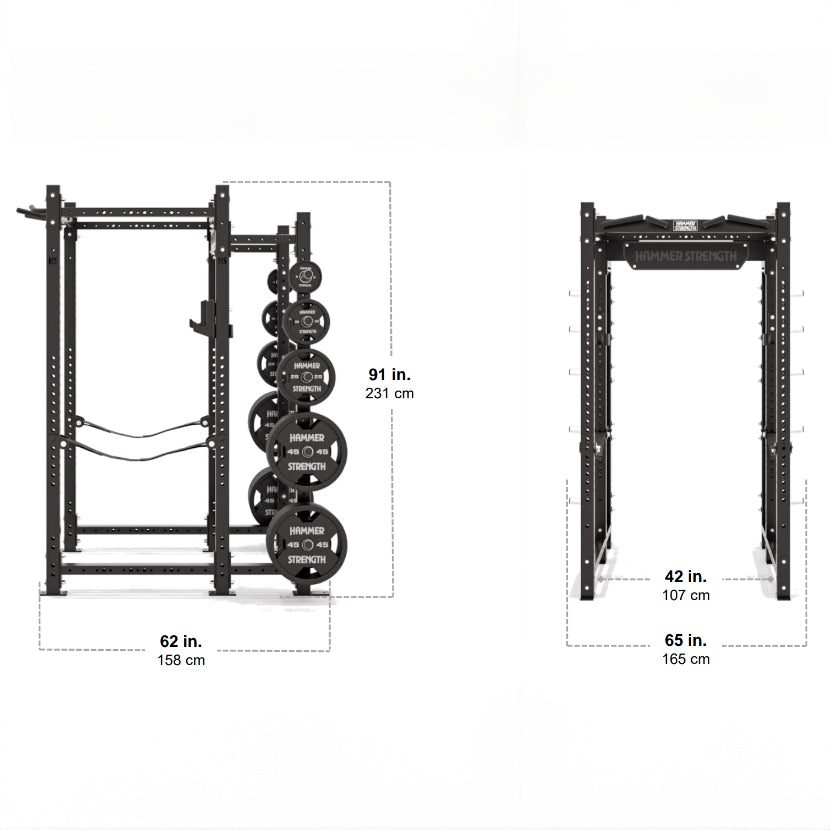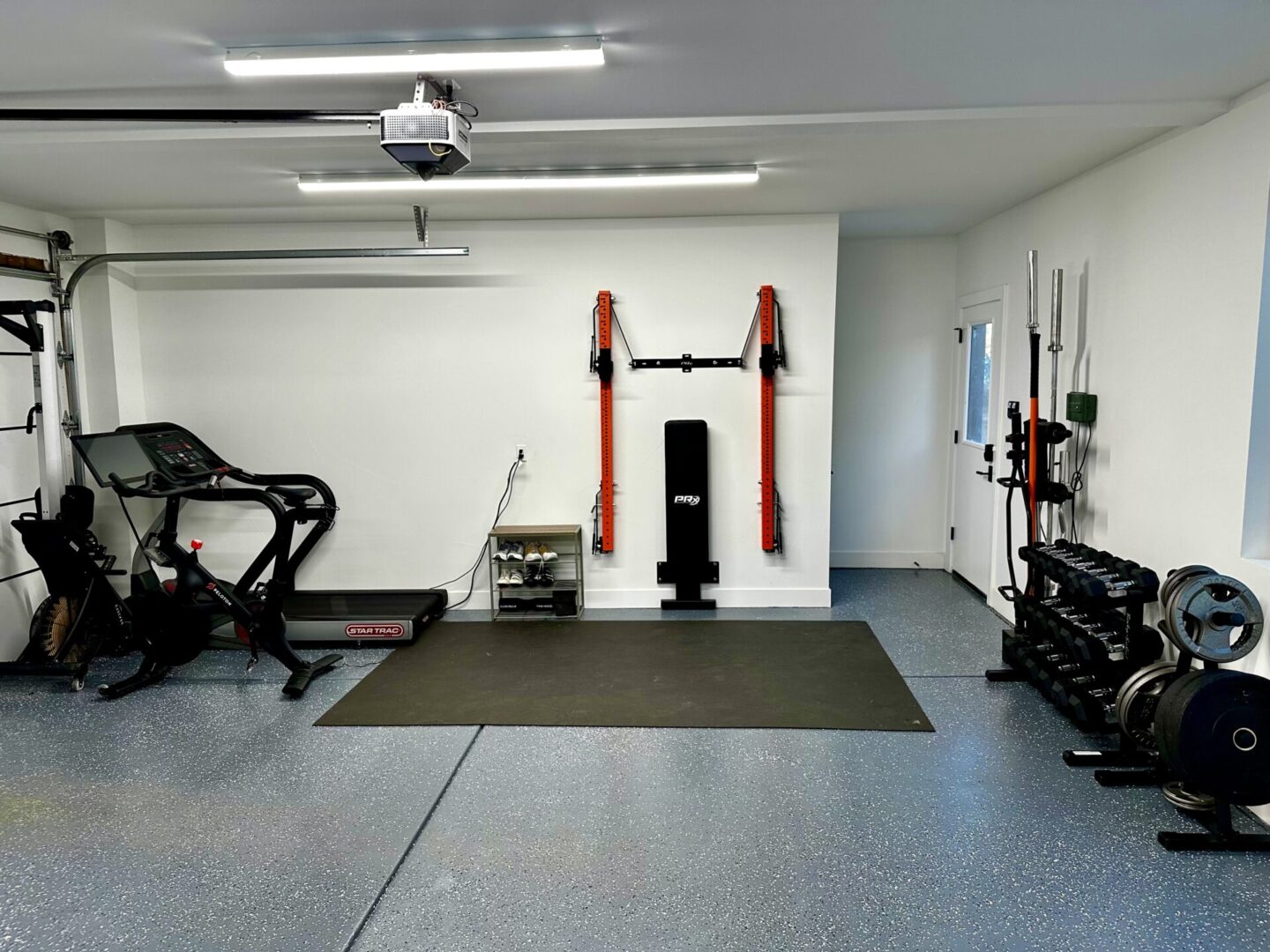If you’re setting up a home gym, a power rack (often called a squat rack) is a versatile cornerstone for strength training. But before you buy, you need to know: how much space do I need for a power rack? This guide breaks down the space requirements and highlights what makes a high-quality rack, ensuring you make an informed choice.
Space Requirements for a Power Rack
A standard power rack typically requires a footprint of about 4 feet wide by 6 to 8 feet deep. However, to use it comfortably and safely, you’ll need additional clearance:
Height: Most racks are 7 to 8 feet tall. Ensure your ceiling is at least 9 feet high to accommodate the rack and allow room for overhead movements like pull-ups. Low ceilings (under 8 feet) may limit your exercise options.
Width Clearance: Often overlooked, you will want to add at least 2 feet on each side of the bar (not the rack) for loading and unloading your weight plates, and for any variance in your movements while working out. If you are using a 7 foot bar, for example, a total width of at least 10 to 12 feet is ideal. Ensure the rack is not placed flush against any side walls (we’ve seen it).
Depth Clearance: Allow 2 to 3 feet in front and behind the rack for safe barbell racking and movement. This brings the total depth to 8 to 12 feet.
Floor Space: Although 12×12 is ideal, a 10×10-foot area (100 square feet) with a 9 foot ceiling height is a safe bet for most racks, including room for a bench and barbell. Smaller racks or half racks may fit in tighter spaces, but always check the manufacturer’s specs.
Consider your workout style. If you’re doing Olympic lifts (e.g., cleans or snatches), you’ll need extra depth for dynamic movements- closer to 15 feet. Also, factor in storage for plates and accessories to keep your gym organized.
What Makes a High-Quality Power or Squat Rack?
Not all squat racks are created equal. A high-quality rack ensures safety, durability, and versatility. Here’s what to look for:
U.S. Manufacturing: Racks made in the USA often meet higher quality standards. Domestic production ensures better oversight of materials and craftsmanship.
Gauge of Steel: Look for 11-gauge steel or lower (lower gauge = thicker steel). This ensures the rack can handle heavy loads (500+ pounds) without wobbling or bending. Cheaper racks often use thinner 14-gauge steel, which compromises stability.
Quality Components: Check for precision-cut holes, sturdy J-hooks, and robust safety bars or straps. High-quality racks have smooth welds and powder-coated finishes to resist rust and wear.
Versatility: A good rack offers attachments like pull-up bars, dip stations, or plate storage. Modular designs let you customize as your training evolves.
Weight Capacity: Ensure the rack supports at least 700-1000 pounds for heavy lifters. Reputable brands clearly list weight ratings.
Tips for Small Spaces
If space is tight, consider a half rack or foldable wall-mounted rack. These take up less room (as little as 4×4 feet when folded) but may sacrifice some stability or features. Always secure the rack to the floor or wall for safety, especially in compact setups.
Final Thoughts
To answer how much space do I need for a power rack, plan for at minimum a 10×10-foot area with at least a 9-foot ceiling for most setups. Prioritize a high-quality rack with 11-gauge steel, U.S. manufacturing, and durable components to ensure safety and longevity. Check brands like Hammer Strength or PRx for reliable options. Measure your space, account for your lifting needs, and invest in a rack that supports your fitness goals.


